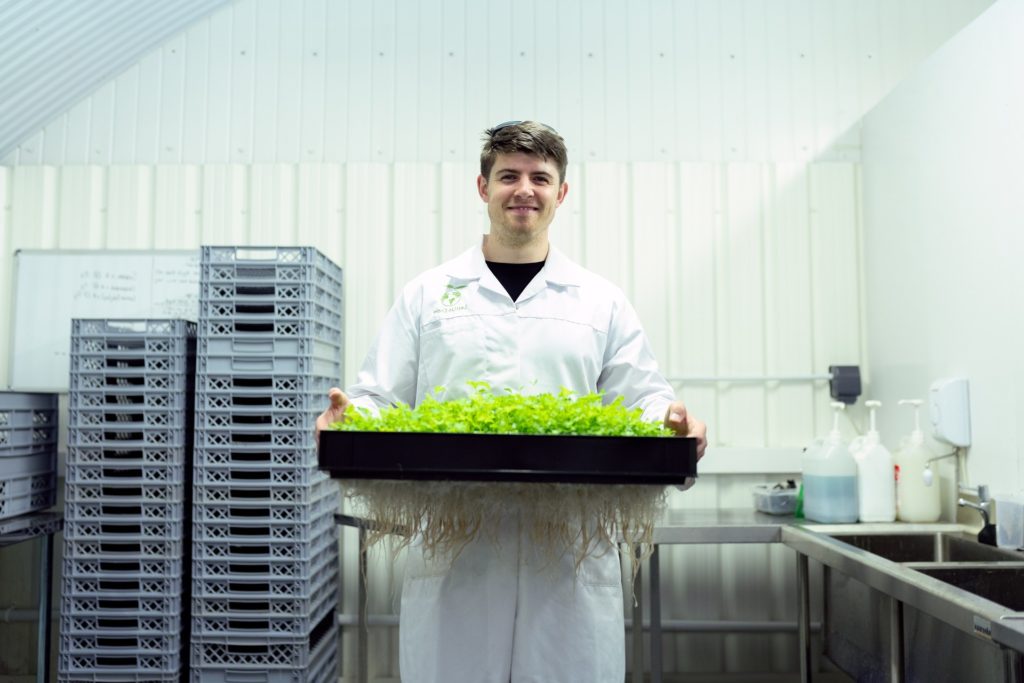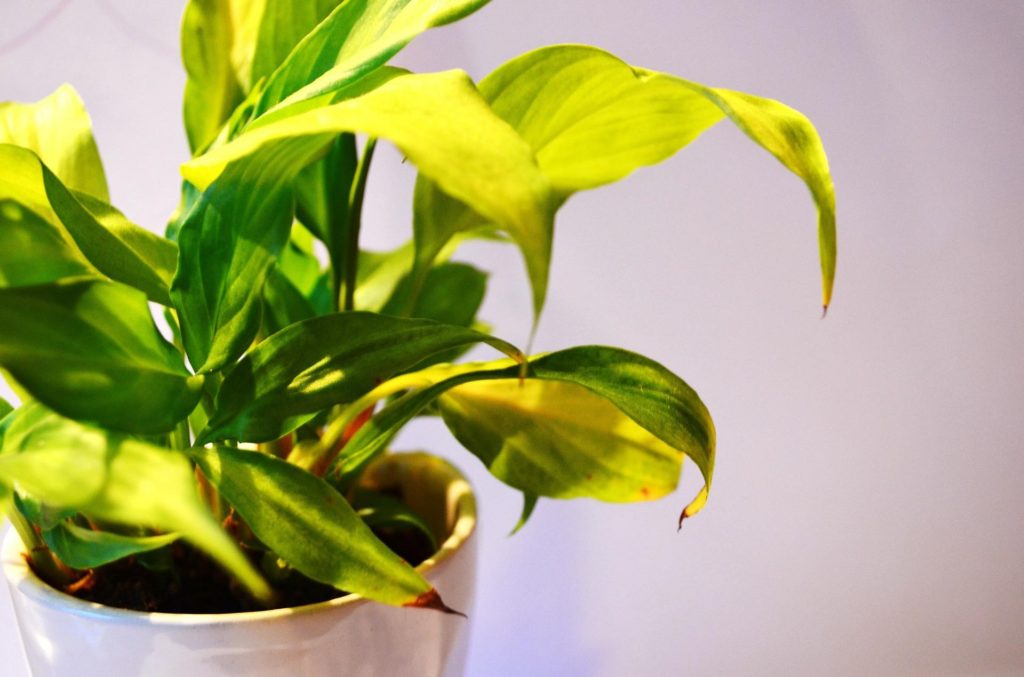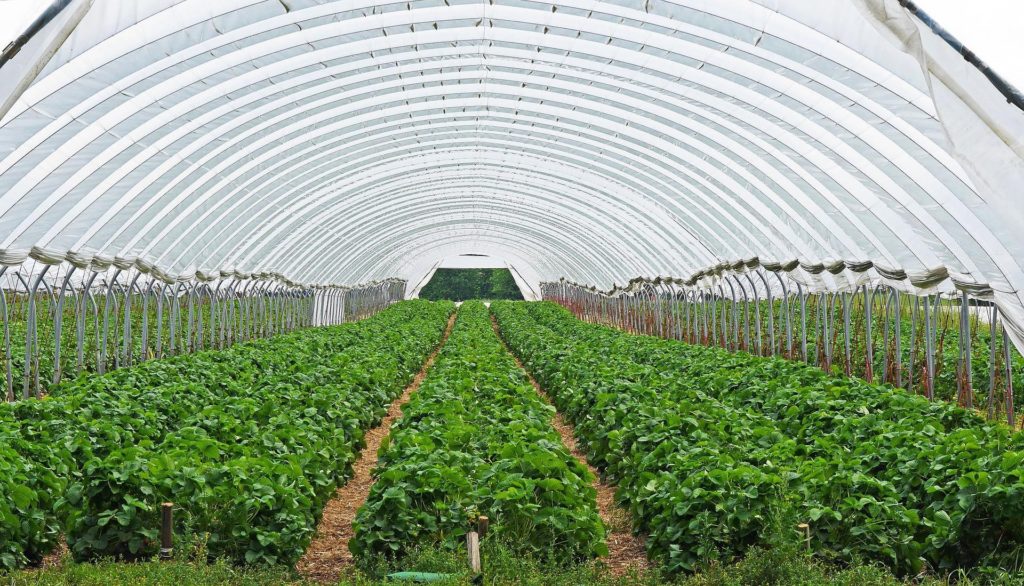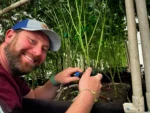Opportunities in controlled environment agriculture (CEA) are exploding with the support of high-performance LED lighting solutions designed to support crops grown in indoor and greenhouse facilities.
“Thriving needs for new ways to cultivate crops” are driving a global explosion in CEA-grown crops. The CEA farming market is expected to multiply quickly over the next few years, more than doubling in value between 2020 and 2025, according to a recent market share forecast by KD Market Insights.
This growth is happening hand-in-hand with a better understanding and application of the science behind LED lighting, a critical component of CEA production since much of plant growth depends on light.
What is Controlled Environment Agriculture (CEA Farming)?
CEA is loosely defined as the combination of engineering, plant science, light control and computer-managed growing techniques used to optimize plant growing systems by mimicking and controlling natural growing methods in indoor settings.
LED lighting that mimics and manipulates natural light spectrums, automated irrigation systems, wireless data-collecting sensors that monitor critical production elements like temperature, moisture level, air humidity and automated plant production benching systems are all incorporated in CEA growing systems.
CEA’s Role in Expanding Food Production

The growth in CEA production is being driven by growing global populations and the impacts of climate change. According to the United Nations Food and Agriculture Organization, populations are expected to rise from 7.7 billion today to 9.7 billion by 2050, increasing the global demand for food by 60 to 70 percent.
Increasing food demands will be keenly felt in countries in Africa, Asia and South America expected to have the fastest-growing birth rates and economies while also the most likely to bear the brunt of climate change-induced weather events. Increasing global temperatures will trigger more temperature extremes, droughts, floods and catastrophic storms, potentially catastrophic to traditional food production systems. Climate change also will increase the persistence of pests and diseases that can significantly impact crop production.
CEA production, which allows farmers to control the environment crops are grown in, is critical to supply critical food needs for growing populations despite the risks of climate events. As well as enable more crop production in densely populated urban areas without appropriate agricultural lands.
While technically any crop can be grown in a CEA facility, crops must be economically viable. Currently, commercially-produced CEA crops commonly include salad greens and herbs, cannabis, flowers, cucumbers, melons, tomatoes, berries, and fodder to feed cattle.
Types of Soil-less Growing Systems used in Controlled Environmental Agriculture Facilities

CEA growers utilize a wide variety of growing systems, many of which are soil-less – meaning they are producing crops without the use of native soil.
- Hydroponics – A soil-less production system that grows plants by providing nutrients through a water base. The plants grow in some type of substrates, such as gravel, sand, coir or even wool. Depending on the crop, they may be planted in grow bags or horizontal planting systems stacked vertically.
- Aeroponics – Plants grown in a perpetually moist environment, typically with roots exposed. Plants are inserted into some type of foam medium that allows their roots to grow and hang. The plants are fed nutrients through a misting process targeted at their roots.
- Aquaponics – Growing plants and fish together hydroponically in a soil-less environment. The waste produced by the fish is optimized as nutrients for the crop.
Greenhouse Versus Indoor Farming in CEA
CEA production runs the gamut of different types of growing facilities. CEA is often associated with indoor farming facilities, such as warehouses of plants stacked vertically to the ceiling with all lighting needs provided artificially. But CEA techniques are also used in combination with natural sunlight.
The first examples of CEA occurred in 17th century France. French market gardeners began using mini, bell-shaped glass cloches to create mini-greenhouses that protected plants and encouraged early growth. Traditional greenhouse growing methods took off from there, starting initially with glass structures and eventually evolving to polyethylene plastic-wrapped greenhouse facilities.

Today many greenhouse growers, especially cannabis and high-value specialty crop growers such as tomato or salad green farms, are incorporating CEA and indoor farming techniques into their production methods. While they grow in a greenhouse facility to take advantage of the efficiencies of natural sunlight, they optimize their growing practices with CEA techniques, including using additional LED artificial lighting to compensate for seasonal lighting constraints or specific crop needs.
For example, vertical ag farms like AeroFarms, an aeroponic grower, rely entirely on artificial lighting to mimic sunlight. In contrast, Bright Farms grows in glass greenhouses using hydroponic techniques with little to no artificial lighting. On the other hand, farms like AppHarvest, a large-scale tomato producer, combine both greenhouse sunlight and artificial lighting techniques to optimize their production cycles. All these farms are using CEA techniques.
High-Performance LEDs and the Future of CEA Farming
Advances in high-performance LED lights enable and support the explosion in the CEA market.
The efficiency and performance of next-gen LED lighting systems allow growers to optimize light quality and quantity while reducing their energy costs. LED lights are also much more durable than traditional high-pressure sodium lights and can be configured in many different ways to support growing platforms.
Optimized LED lighting systems such as those developed by BIOS Lighting maximize photosynthesis and plant growth and focus on the key ways lighting potential promotes a plant’s potential. BIOS Lighting was founded by former NASA scientists that developed the original technologies to provide light to grow crops in space.
Taken together, advances in LED lighting performance combined with CEA production techniques are revolutionizing a new way forward in feeding the world.
For more information on the latest advances in LED lighting systems, see the Greenhouse Lighting and Systems Engineering (GLASE) Consortium. For details on BIOS Lighting’s technology for food and cannabis CEA growers, please reach out to our CEA lighting experts.




